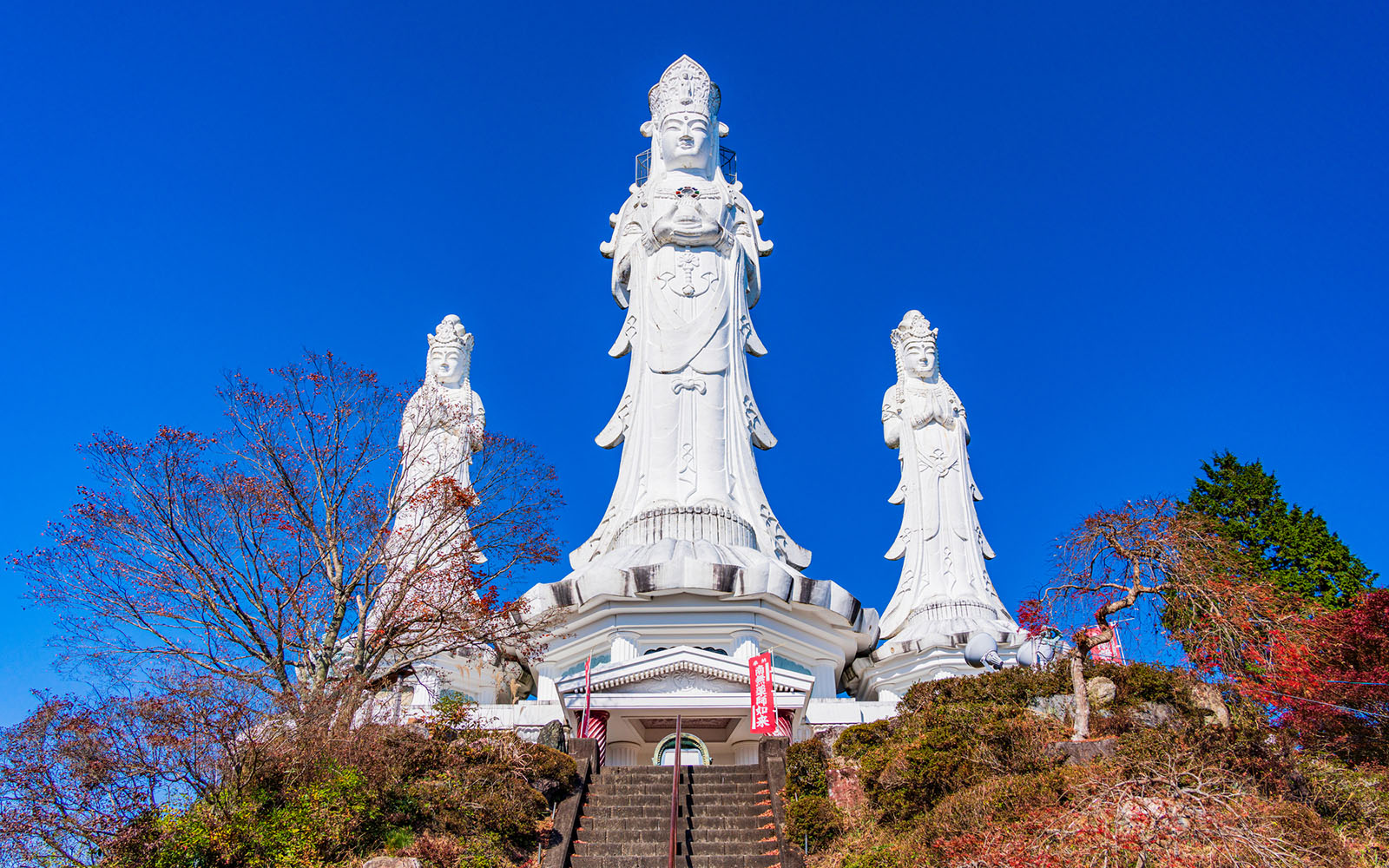Mount Hakuun Torii Kannon


In the quiet area of Naguri, in Okumusashi, stands Mount Hakuun Torii Kannon. This temple complex in Saitama Prefecture covers about 30 hectares. Moreover, it is also one of the top 100 official tourist attractions of Saitama Prefecture.
Mount Hakuun Torii Kannon
 Photo by: PIXTA/ Yoshitaka
Photo by: PIXTA/ YoshitakaYataro Hiranuma spent over 30 years shaping this mountain into a sacred site. In his forties, he began carving statues and constructing halls to honor the Kannon Bodhisattva, the Goddess of Mercy.
Walking through the grounds, you will find the main hall, Gyokkamon Gate, Niomon Gate and the Great Bell Tower. At the summit stands the Great Kannon of Salvation, a 27-meter-tall statue that watches over the valley. Inside the statue, visitors can climb to an observation deck and enjoy expansive views of the Oku-Musashi mountains.
Seasons and Festivals
 Photo by: PIXTA/ Yoshitaka
Photo by: PIXTA/ YoshitakaMount Hakuun changes with the seasons. Azaleas bloom in spring, hydrangeas in summer and maples blaze red in autumn. Starting from late October, the mountain begins to showcase vibrant autumn color. This makes it one of the top destinations to explore in Saitama. The contrast between the bright red leaves and the white Kannon statue is striking.
The temple opens daily during the special autumn foliage season, from mid-November to early December. Visitors enjoy light hikes, local food and scenic views that blend nature and faith.
In mid-August, people celebrate the Torii Floating Lantern Festival during the summer. Lanterns drift along the Naguri River, followed by fireworks lighting up the night sky.
Walking the Path
 Photo by: PIXTA/ Yoshitaka
Photo by: PIXTA/ YoshitakaYou can reach Mount Hakuun by car from Hanno City in about 40 minutes, following the Irumagawa River. The temple gate marks the start of a gentle climb. Most people choose to walk the trails rather than drive, as the slow pace allows time to take in the details like the scent of cedar, the sound of bells and the distant chanting from the halls.
Along the path, visitors encounter many structures inspired by different cultures. The U-shaped Gyokkamon Gate features lion-dog reliefs reminiscent of those found in temples in Chiang Mai, Thailand. The Genjo Sanzo Tower holds the remains of a famous Buddhist monk known from the Chinese novel ‘Journey to the West.’
The Great Kannon statue itself is a story of dedication. It was built in 1971, using a helicopter to lift mold and pour concrete on-site. It combines the architectural styles of Japanese temples with influences from Indian and Middle Eastern designs. Inside, stained glass fills the space with soft light.
As you stand before the statue and watch the mist rise from the valley, it feels as if time has slowed.






